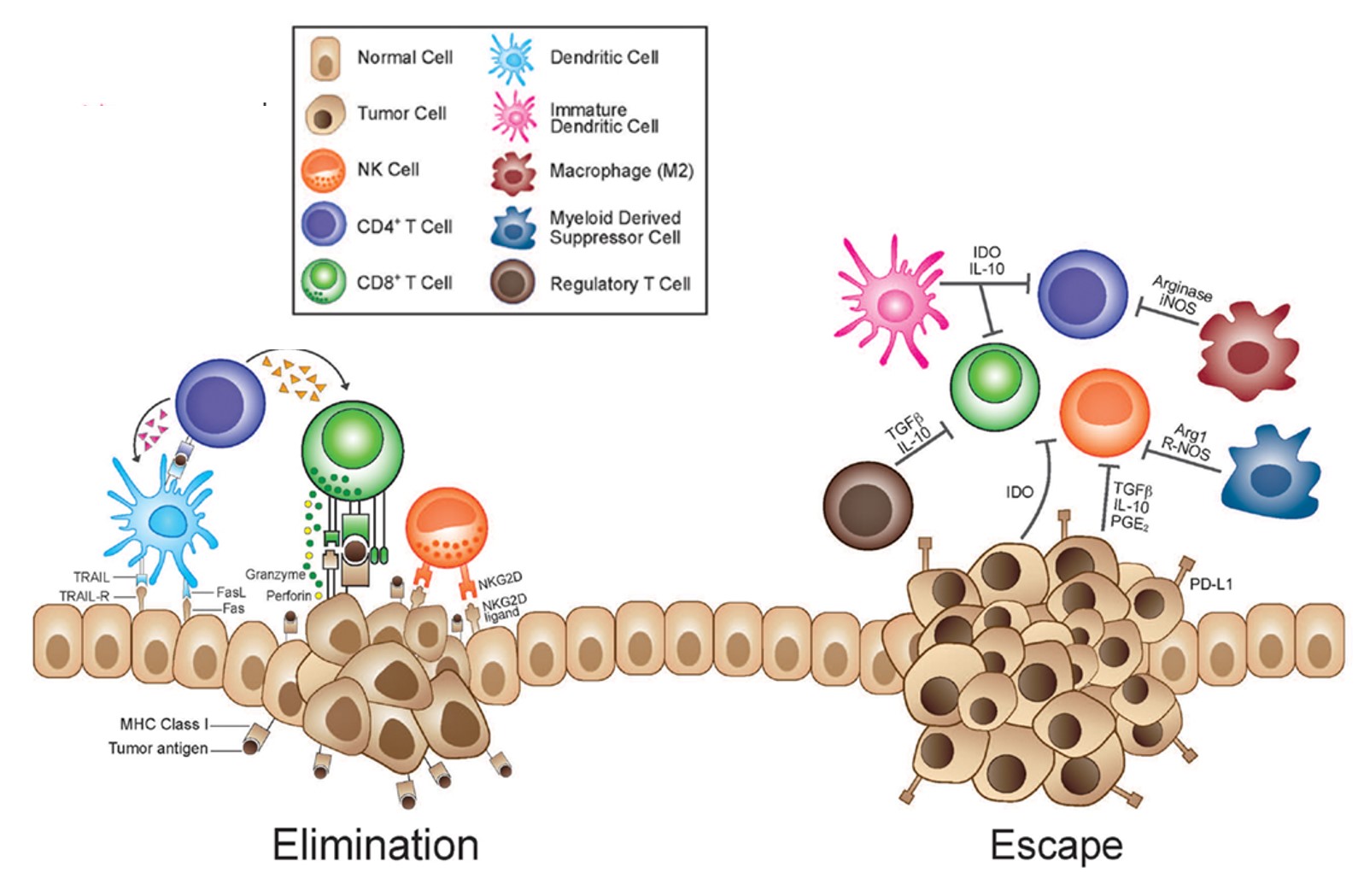Building a brake pedal: MDSCs as targets for immunotherapy

The immune response is orchestrated. There are mechanisms to activate and deactivate activities. Myeloid-derived suppressor cells (MDSCs) are immune cells that act as regulators of immune responses. They are important in several diseases including tumor growth and the response to cancer therapies, Graft-Versus-Host Disease (GVHD), various autoimmune diseases, and COVID-19. Novel drugs developed to modulate MDSCs are showing promise with ongoing clinical trials for COVID-19 and some cancers.
As the name would imply, MDSCs originate from the myeloid compartment. They lack expression of many of the surface receptors characteristic of the more differentiated myeloid cells, like monocytes, macrophages, or dendritic cells. They have previously been referred to as “null” cells because of this lack of cell-surface marker expression but are generally identified by GR1 and CD11b expression in mice and in humans by the presence of CD11b and the absence of CD14. Like T regulatory cells (Tregs) and B regulatory cells (Bregs), MDSCs serve as regulatory myeloid cells.
MDSCs exert an immunosuppressive effect through the production and release of a variety of cytokines and cytokine-modulating factors, including arginase 1 (Arg1), nitric oxide (NO), IL-10, TGF-β, COX2, and indoleamine 2,3-dioxygenase (IDO). However, MDSCs are not universally immunosuppressive and exert different responses in different immune populations. For example, through the production of IL-10, TGF-β, Arg1, and IDO, MDSCs inhibit natural killer (NK) cells and the majority of T cells, but these same cytokines, along with additional factors like IL-6 and IL-23, promote T regulatory and Th17 cell expansion and function.
MDSCs are a heterogenous population of cells that can be further divided into two subsets based on the expression of LY6G and LY6C. Importantly, they may play different roles in cancer and autoimmune conditions.
Regarding cancer, many factors produced by MDSCs (e.g., VEGF, GM-CSF) promote angiogenesis and metastasis – both critical processes in cancer progression, making them suitable targets for the treatment of cancers. Proteins such as SPARC have been identified which may mediate the suppressive effects of MSDCs in cancer. Indeed, there are multiple ongoing clinical trials targeting MDSCs for treatment of a diverse set of cancers including leukemias, melanoma, and head and neck cancers. In contrast, in autoimmune GVHD, hijacking MDSCs and increasing their effect may be beneficial to tamp down dysregulated or overactive immune responses.
In COVID-19, MDSCs suppress T cell function that would otherwise help clear the SARS-CoV2 virus. This occurs primarily through the release of TGF-β, reactive oxygen species (ROS), Arg1, and inducible nitric oxide synthase (iNOS). Many COVID-19 patients have elevated MDSCs which correlates with worse disease outcomes. Researchers are investigating whether targeting this immune population may be a beneficial therapeutic strategy for the treatment of COVID-19.
The chemokine CXCR1/2 is thought to be responsible for the recruitment of MDSCs. SX-682, an inhibitor of CXCR1/2 receptors, is currently being investigated in clinical trials for the treatment of metastatic melanoma, colorectal cancer, pancreatic cancer, and Myelodysplastic Syndromes both as a means to reduce MDSC recruitment and to improve sensitivity to immunotherapies such as T cell immunotherapies (e.g., anti-PD-1 (pembrolizumab) and anti-PDL-1) or NK cell therapeutic strategies.
IMAGE: Immune cells in the tumor microenvironment. Creative Commons
Learn more about powerful technologies that are enabling research:



